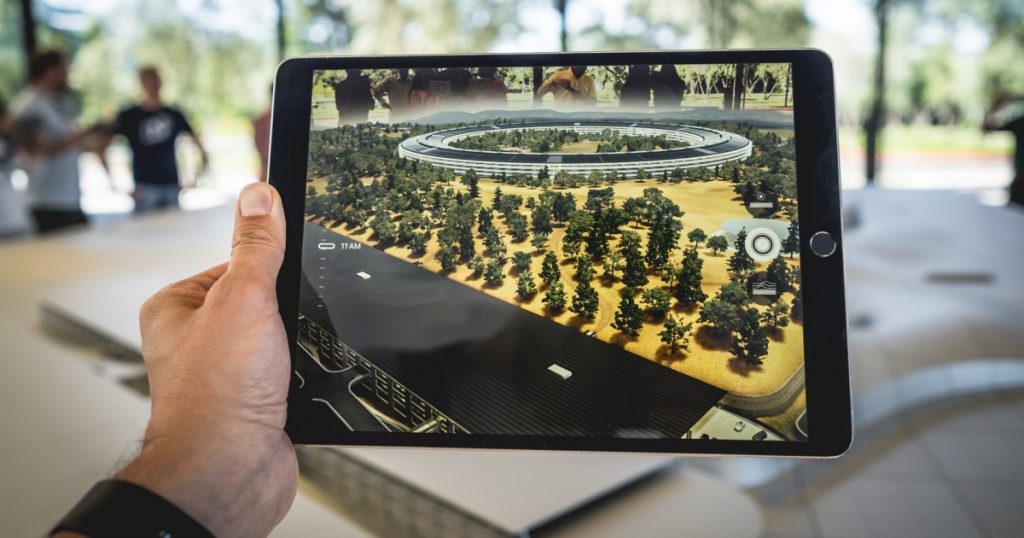
HYPERVSN 3D Catalog
USD 1,200
Qty

HYPERVSN 3D Catalog
USD 1,200
Qty

HYPERVSN 3D Catalog
USD 1,200
Qty
Cart Subtotal:
USD 3,600

Dmitry Shatkov
Ecommerce Manager
Holograms, virtual and augmented realities have gradually become mainstream in business and commerce. Providing users with extra valuable information, or creating a brand-new digital world, these technologies allow companies to win big over their competition and lead the race.
In the interaction between humans, the digital and physical worlds, virtual and augmented realities take up opposite positions of the virtuality continuum. The range of virtuality states creates the so-called Mixed Reality spectrum, featuring these three main points:
As a part of mixed reality, the holographic display technology can be used in different spheres, the same as the virtual and augmented reality technologies.
Fundamentally they’re very similar, though we use virtual and augmented realities quite differently and, in some cases, cannot replace them with one another.
For example, virtual reality is indispensable for complex simulators when there is no way to reproduce particular reality conditions. Meanwhile, augmented reality is required for design and furniture modelling, and extending reality with extra data.
VR Games
VR gaming is currently the most immersive gaming experience out there, which involves the three-dimensional artificial environment. Equipped with VR headsets, most sophisticated gaming rooms may also utilise treadmills, wearable computers, smell dispensers and sensors for touch perception or even feedback.
VR Simulators
Virtual reality simulators are especially useful for education and training. For example, training civil or military airforce pilots now is impossible without VR simulators. They allow designers to replicate almost any air situation and, this way, can prepare cadets for them even before they leave the training centre.
Virtual reality allows simulations of any condition or setting. Using it, students can visit ancient Rome, explore the human brain or board the Titanic. Big corporations can also exploit all the advantages of VR for remote hiring or training their employees.
VR Tourism
Imagine that you can interact and explore the hotel, restaurants and sights you intend to stay at and visit. Or you can plan your next travel destination thanks to the availability of VR tours.
The opportunities of virtual tourism are limitless. You can take virtual excursions to Mount Everest or The Louvre, explore the Taj Mahal or dive to the depths of the Mariana Trench, walk the Great Wall of China or have your mind blown by the Grand Canyon.
VR Broadcasting
Another way to take advantage of this technology is VR broadcasting. Mainly for sports and other live events, certain broadcasting companies change how we watch football, tennis, boxing or the Olympic Games. Not only able to switch view locations, spectators can also change viewing angles and even get 360-degree views.
VR broadcasting is a brand-new way to watch sports and embrace the whole event online.
VR Socialising
And, of course, people use virtual reality for socialising. Now, when social media plays such a significant role in our lives, the appearance of communications based on virtual reality was just a matter of time.
Virtual parties are no longer a joke, but a way to become someone else in the real world. Here you can try any outfit and any style you want! Try that mohawk you’ve always wanted! That’s the game that changes the way of living that we’re all used to. You can virtually be anyone you want to be!
The advantage of AR is that it allows users to get additional digital benefits without losing touch with reality.
AR Games
Pokemon Go is the iconic augmented reality game that requires players to go out into the real world and collect artefacts there. But Pokemon Go is not the only gameplay possible for AR games. There are table AR games or games that include augmented reality missions, like finding virtual portals or struggling with dark wizards or zombies.
AR Shopping
Retailers can significantly benefit from augmented reality technologies. For example, virtual fitting rooms increase online sales and reduce return rates. Using AR applications, customers can customise the look of motorcycles or cars and use the resulting images for their orders.
AR Logistics
You can also successfully use augmented reality in warehouses when searching for particular items, or getting additional information about goods. For example, DHL has already implemented Smart Glasses, providing staff with the shortest routes to their required products.
AR Repair and maintenance
The workers in the repair and maintenance field can also use AR headsets. Smart Glasses, for instance, can tell them about the weak spots of various mechanisms, or suggest fixes for the detected malfunctions.
AR Education
Sometimes full virtualisation is not required, and is even excessive for long-term studies. Often, it is only necessary to get some additional information during the course. For example, displaying a solar system during astronomy classes or recalling molecular structures in chemistry lessons doesn’t require total immersion.
Both, conventional holograms and 3D holographic images add new dimensions to flat pictures, and allow you to get a better idea of any displayed subject.
The parallax effect, we can call an “all-round view”, inherent to the images created with the authentic holographic technology, is stunning but available only in laboratory conditions. Commonly 3D holographic images cannot boast of having this “wide” angle, but due to the 3D depth and floating effect, they also look highly impressive, which is valuable for many industry areas. And HYPERVSN is one of those 3D holographic technologies that are successfully used by retail, automotive, telecommunication, transportation and other industries.
Military mapping
3D maps are indispensable in military affairs. Filmed with drones, for example, holographic maps allow soldiers to look at the entire battlefield at once and assess the overall situation. The displayed volumetric relief simplifies the assessment of current disposition, and helps to make redeployment decisions.
Medicine
As soon as it becomes commonly available, holography will become the most used display system in medicine. Like nothing else, holograms are perfect for visualising human organs and body systems. It will help doctors see all the details with no glasses or other similar devices, and allow them to make informed decisions.
Art
Holograms not only display actual objects, but can also be generated by computers artificially. This opportunity creates a large field for creativity. In fact, holograms are now a new kind of fine art.
Communications
And of course, we could not ignore the opportunity of realistic 3D images to facilitate communications between people. The presence effect makes holographic human images useful for online meetings, presentations, personal negotiations or interviews, especially in this pandemic.
The above examples and assumptions are only a shortlist of possible use cases on how we can use holograms, VR and AR tech in the future. But there’s no doubt, that the described technologies are going to become common very soon, and will significantly improve our lives.




subscribe

USD 1,200
Qty

USD 1,200
Qty

USD 1,200
Qty
Cart Subtotal:
USD 3,600☎️